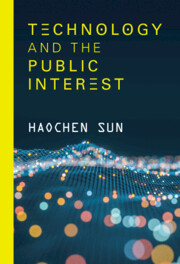Book contents
- Technology and the Public Interest
- Technology and the Public Interest
- Copyright page
- Contents
- Introduction
- 1 The Human Right to Technology
- 2 The Collective Right to Technology
- 3 The Fundamental Right to Technology
- 4 The Irresponsibility of Technology Companies
- 5 Fundamental Corporate Responsibility
- 6 Patent Responsibility
- Acknowledgments
- Index
1 - The Human Right to Technology
Published online by Cambridge University Press: 22 April 2022
- Technology and the Public Interest
- Technology and the Public Interest
- Copyright page
- Contents
- Introduction
- 1 The Human Right to Technology
- 2 The Collective Right to Technology
- 3 The Fundamental Right to Technology
- 4 The Irresponsibility of Technology Companies
- 5 Fundamental Corporate Responsibility
- 6 Patent Responsibility
- Acknowledgments
- Index
Summary
Alfred Nobel, the inventor of dynamite and other explosives, suffered from severe depression following a French newspaper’s erroneous publication of his obituary in 1888. The obituary condemned him as a “merchant of death” who had become wealthy by inventing new technologies designed to “kill more people faster than ever before.”1 Many other newspapers worldwide followed the obituary’s lead in celebrating Nobel’s supposed demise, which later proved to be what we would today call “fake news.” Devastated by the international media’s accusations, Nobel began to reevaluate his fame and fortune, both of which derived from his invention and patenting of deadly technologies, although those technologies had also facilitated construction work ranging from rock blasting to the building of canals. This reevaluation led him to denounce the widespread use of weapons in wars as “the horror of all horrors and the greatest of all crimes”2 and to dedicate most of his wealth to funding the establishment of Nobel prizes in a variety of fields, earning him a posthumous reputation for promoting peace and knowledge growth.
- Type
- Chapter
- Information
- Technology and the Public Interest , pp. 16 - 39Publisher: Cambridge University PressPrint publication year: 2022

